Shop
Our Brigandine Arms with Splinted Segments consist of biceps, articulated elbows, vambraces (brassards) which are reinforced with steel plates. The perfectly articulated elbows are riveted to the arms – no holes, no leather laces. The upper arms have leather points that allow you to affix the armor to your gambeson. Our Brigandine Arms are equipped
Greaves were an important component of the armor of many troops, including Western European knights and Roman legionnaires and centurions. They were widely used by cavalry to protect legs and heels while riding a horse. Our base-option Greaves are made of 1.5mm cold rolled steel. They conform to the shape of your calves, making them
Leather or fabric with riveted and/or sewed metal plates underneath was an extremely popular form of armor among warriors of the XIV century. Brigandine armor was a precursor to plate armor (often called “white armor”). Due to their lower cost of production and upkeep, brigandine elements were accessible to nearly all medieval knights of Western
This stylization of the sabatons of the French king Charles VI (1368-1422) is based on an example which is preserved in Chartres Cathedral in France. They have taped points and are adapted for full contact medieval battle. Riveted steel lames provide excellent mobility and flexibility. Sabatons are an essential part of full leg protection and
Beginning in about the XIII century, knights’ equipment started to include metal gauntlets. Metal gauntlets were expensive to manufacture because they required great skill on the part of the armory smith. In addition, steel was still an expensive material and as a result, only kings and wealthy knights could afford metal gloves. The poorer warriors
Splinted cuisses crafted according to XIV to late XV century design and completed with fluted steel knee cops. These leather cuisses are reinforced with metal bars which provide great protection and flexibility. The steel elements are made of 1.5mm cold rolled steel (base option) and 4mm durable brown leather. They are also available in 1.0mm
The cuirass was developed from an earlier type of armor called “a coat of plates” which was composed of small iron scales attached to a cloth or leather base. Because leather can be stretched, it causes gaps between small metal plates. The weak places in armor are always a perfect target for a rival’s blade.
Our Gobelin Padded Arming Coif is made from natural breathable materials. Four layers of cotton batting make it durable and shock-resistant. It’s irreplaceable under-armor wear. Our Gobelin Padded Arming Coif is made with 100% cotton wadding, handmade, and has high quality machine stitching, and is available in either white or black. Two leather straps allow
If you are looking for basic, practical elbow protection, look no further. The lightweight, plain shape of Steel Elbows provides perfect mobility. The Steel Elbows have leather straps and laces for a secure fit exactly where you need it. They’re a great addition to any set of armor. N.B.: The listed price is for a
The brigandine was naturally developed from early coats of plate, a reinforced surcoat from the XIII century. One of the rare examples of this early armor type can be seen on the statue of St. Maurice in Magdeburg Cathedral (1240). St. Maurice is depicted dressed in chainmail and a surcoat. There are two rows of
A Kettle Hate is a type of helmet that looks like the brimmed iron hat. It is also known as a “Chapel de fer” in French or “Eisenhut” in German. This type of helmet appeared at the end of the XII century. At the beginning, it was designed like Scandinavian helms: four quarters joined on
XV century Milan style leg protection; composed of cuisses and poleyns. The side-wings have ribs for additional durability. The articulated upper-extension plate of the cuisse is movable and covers the top of the thigh. OurMilanese Legharness is reinforced with a central rib. It is made of 1.5 mm cold rolled steel and is also available in

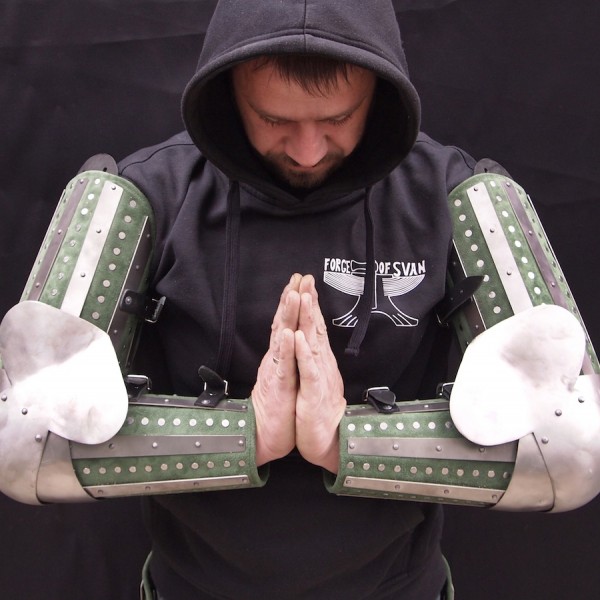
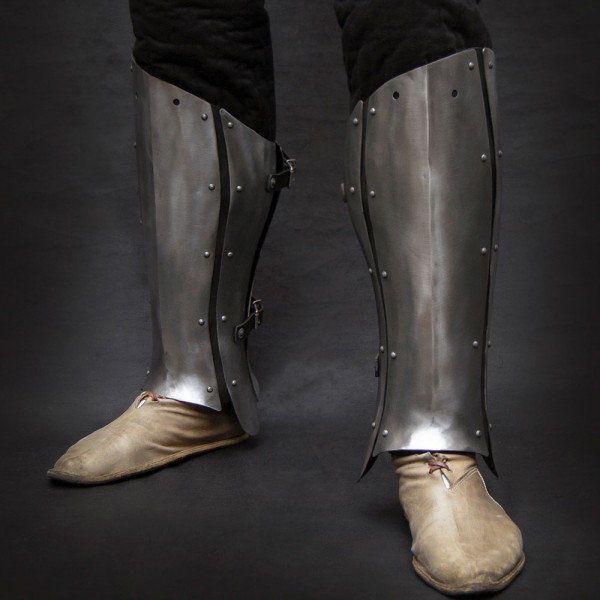
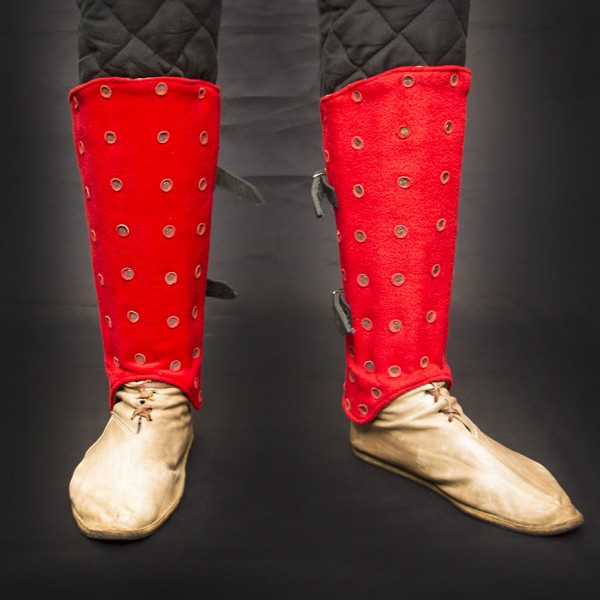


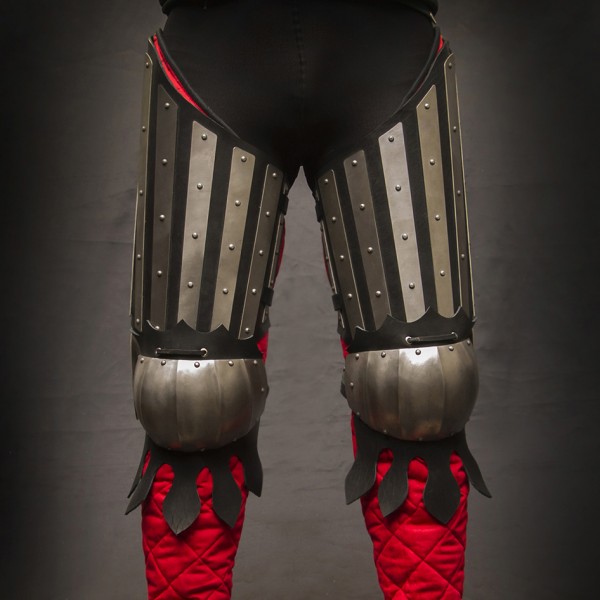
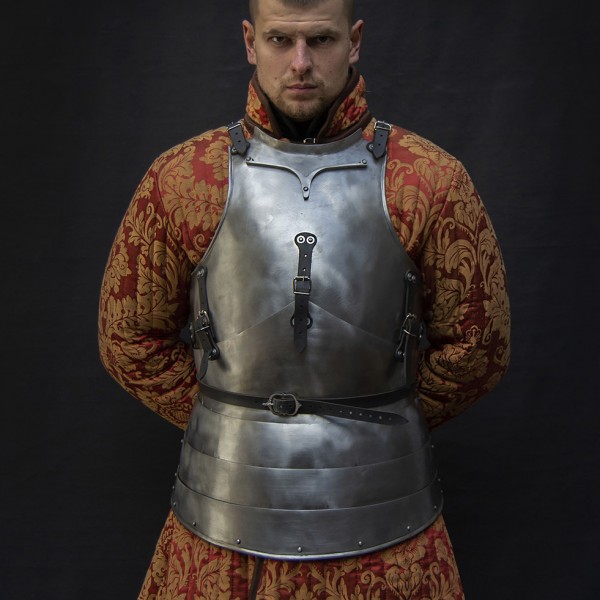
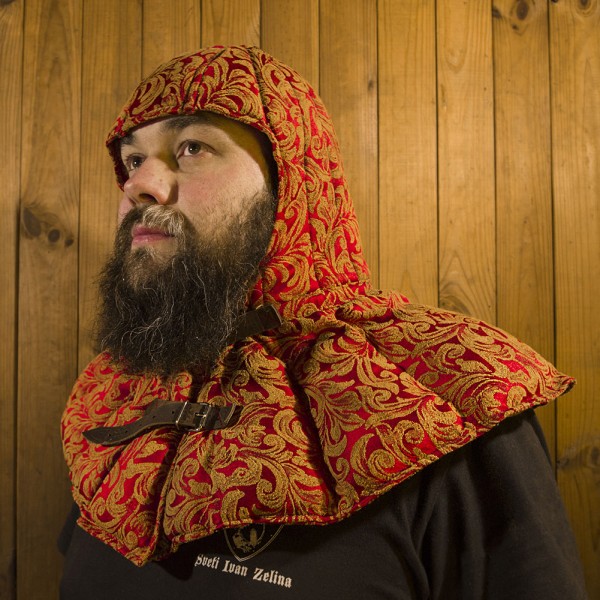
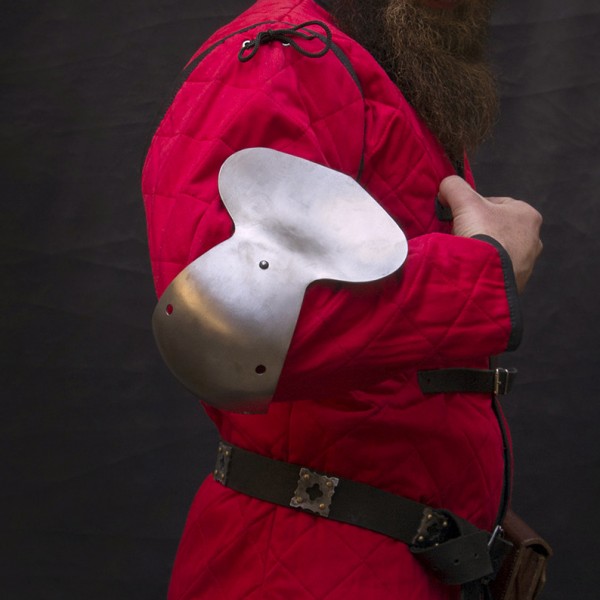
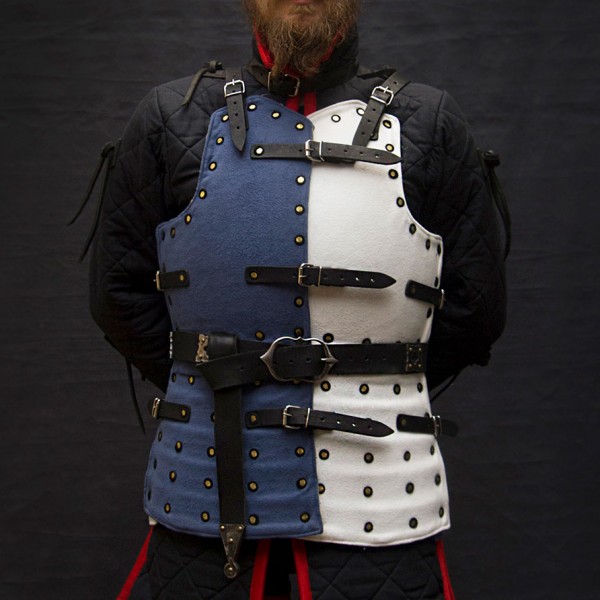
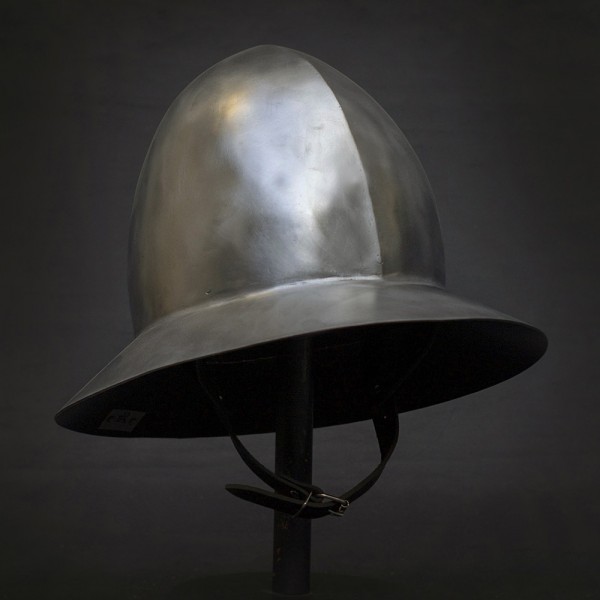
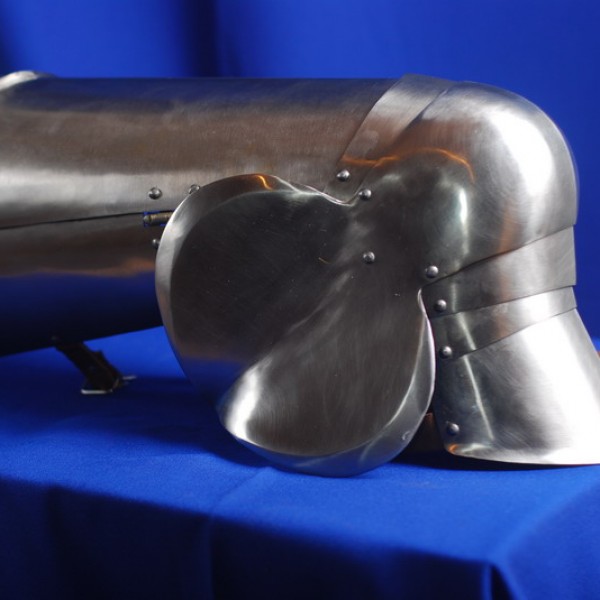
 Shop
Shop